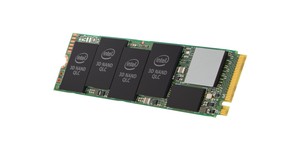Researchers uncover phase-change memory secrets
December 3, 2018 | 11:37
Companies: #arizona-state-university #saarland-university #technical-university-of-munich

Researchers at the Arizona State University's School of Molecular Sciences, the Technical University of Munich, and Saarland University have published research on a form of phase-change memory (PCM) which they claim could create non-volatile storage some thousandfold faster and more durable than today's NAND flash.
Where traditional magnetic storage toggles the magnetic polarity of a given bit to store a zero or a one, phase-change memory (PCM) - as its name suggests - toggles matter between liquid, glass, and crystal states. First demonstrated by Stanford Ovshinsky in 1975, the technology long languished in labs, but a team of researchers claim to have made a breakthrough which could potentially bring the technology to market as a superior replacement for NAND flash.
The team's research concentrates on a semi-metallic alloy of germanium, antimony, and tellurium, which through quasi-elastic neutron scattering (QENS) analysis has been shown to toggle between glass and crystal via liquid in one thousandth of one millionth of a second using a pulse of heat or light. This state is then read through its electrical resistance: high for zero, and around a thousandfold less for one.
'The amorphous phases of this kind of material can be regarded as "semi-metallic glasses,"' explains researcher Shuai Wei. 'Contrary to the strategy in the research field of "metallic glasses," where people have made efforts for decades to slow down the crystallisation in order to obtain the bulk glass, here we want those semi-metallic glasses to crystallise as fast as possible in the liquid, but to stay as stable as possible when in the glass state. I think now we have a promising new understanding of how this is achieved in the PCMs under study.'
The team's work has shone a light on exactly how the material in question operates at a fundamental level, but stops short of suggesting methods of mass production at the densities, cost, and volume required for it to take the place of today's NAND flash. Nevertheless, they are confident in its potential, claiming that it could be a thousandfold faster than NAND flash, consume less power, and boast greater durability for read-write cycles.
More information is available from Arizona State University.

MSI MPG Velox 100R Chassis Review
October 14 2021 | 15:04








Want to comment? Please log in.